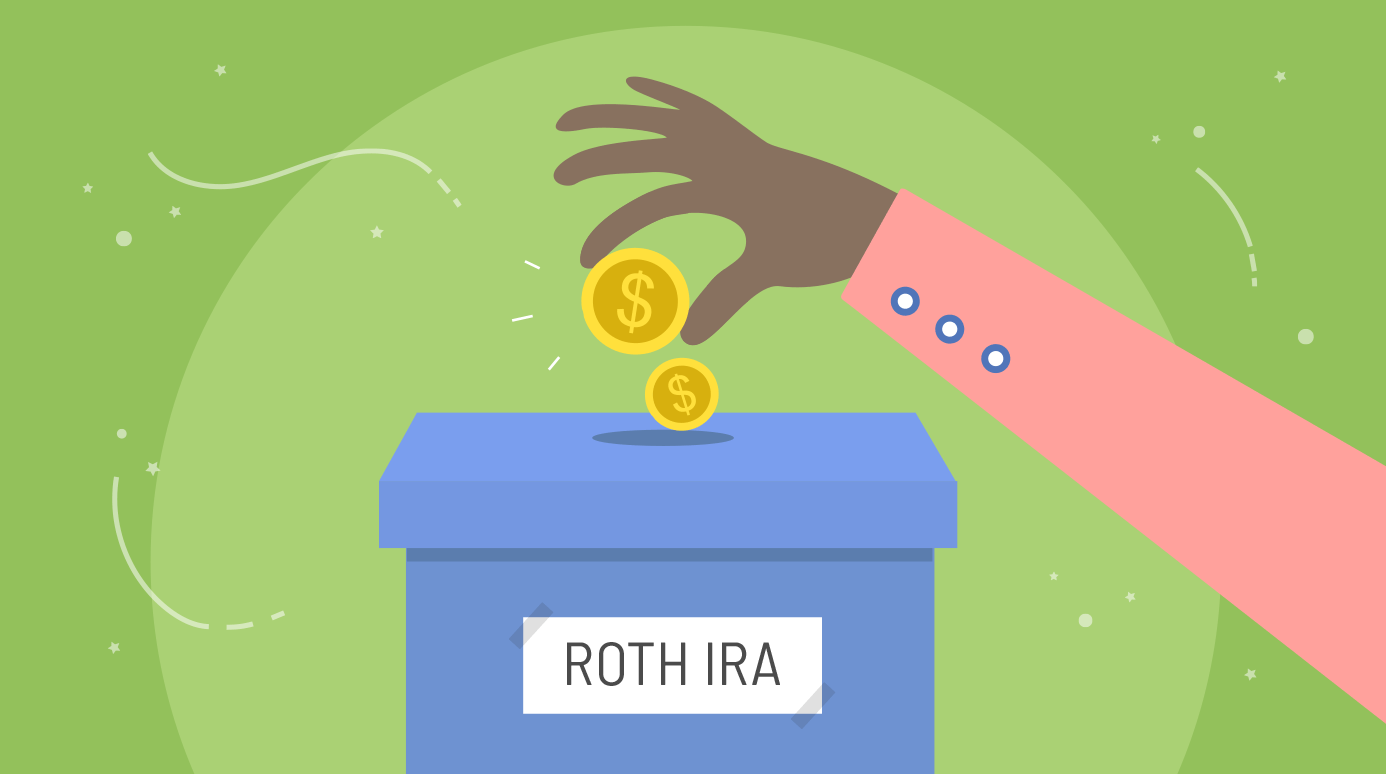Lesson 10: Investment Options
/en/moneybasics/planning-for-retirement/content/
Investment options
By the end of this lesson, you should be able to:
- List different types of investments
- Discuss investment options
Investment plans at work
You have several options to choose from as you plan for life after work. Many companies offer savings and retirement plans. The retirement income you receive from such a plan depends on how much you (and your employer) have contributed during your working years and the earnings on those contributions.
- 401(k): Company retirement savings plan
- 403(b): A plan often available to employees of public schools and some religious, charitable, or educational tax-exempt organizations
- Thrift Savings Plan (TSP): available to people who work for the U.S. government either as civilians or as members of the uniformed services
The amount you regularly contribute to one of these plans is usually taken out before you receive your paycheck, so it isn't taxed. Many companies also will make a matching contribution. For example, a company might contribute 50 cents for each dollar you contribute. The money is typically invested in preselected mutual funds. However, you can choose from among the funds, as well as what percentage of your contribution you want invested.
Money put into a mutual fund is pooled with the money of many other investors. By investing in a mutual fund, you buy units of that fund. The value of your units can rise or fall based on the type and performance of the mutual fund.
If you leave a company, you can roll over—or move—your eligible retirement funds left to another qualifying retirement account with a new company or into an Individual Retirement Account (IRA). You'll learn more about IRAs later in this lesson.
What's an IRA?
An Individual Retirement Account (IRA) is a retirement savings plan that allows you to invest money in various ways—stocks, bonds, and money market accounts are a few examples. IRA contributions are limited to $5,500 through 2013. Anyone 50 years old or older can make additional catch-up contributions of $1,000 for 2012 and beyond.
An IRA lets you invest money more freely than a 401(k), 403(b), or TSP. Instead of being limited to preselected mutual funds, you can put money in any investment you choose.
Types of IRAs
If you think an IRA may be an investment worth exploring, be aware of your options to decide which one is right for you. There are two basic kinds of IRAs:
- Traditional IRA: This type allows you to defer taxes on your earnings until you withdraw them. Certain contributions are tax deductible on your tax return depending on your income tax filing status. If you withdraw the funds after age 59½, you pay a regular income tax rate. However, If you withdraw it before age 59½, you will likely have to pay income tax and a 10 percent to 25 percent penalty on any earnings. If the funds are used to pay for education expenses or for one of nine exceptions, the 10 percent early withdrawal penalty does not apply. Distributions must begin by April 1 after the year you turn 70.
- Roth IRA: Contributions to this account are not tax deductible. It allows tax-free withdrawals after you reach age 59½, and before that time under certain conditions. Unlike a traditional IRA, which requires you to withdraw money by age 70½, a Roth IRA allows you to leave your account intact for as long as you wish. People who expect to be in a higher tax bracket when they retire may benefit more from these accounts than from traditional IRAs.
Withdrawals from either a Roth or traditional IRA if used for a first-time home purchase up to $10,000 are not subject to the 10 percent penalty for early withdrawal.
You can generally open an IRA at a financial institution or brokerage. Expect to pay an annual fee of between $10 and $45 for handling the account. Conduct some research to find banks and brokerages that charge low rates.
If you change jobs, you can move any money in an existing 401(k) account into a rollover IRA or into your new company's 401(k). Legislation passed in 2002 also allows 401(k) funds to be rolled over into a 403(b) plan and vice versa if the specific plan allows for such rollovers.
For more information on IRAs, visit this FAQ page on Individual Retirement Accounts from the IRS.
Other retirement savings options
There are many other retirement savings options available, including:
- Keogh Plan: If you are self-employed, you might want to consider this tax-deferred retirement saving plan. Usually, 25 percent of the income you earn—a maximum of $47,000 per year—can be contributed. Keogh plans are more complicated to set up than IRAs, so be sure to get good tax advice before the plan is set up.
- Stocks: Buying stock in a company allows you to become partial owner of that company. Thoroughly research and look for companies that have a good financial outlook. Make sure you understand the risk of loss, as well as the opportunity to gain from your investments.
- Bonds: Bonds are loans you make to a corporation, the federal government, or a local government. You basically become a lender for a set period of time, called a term, and are paid interest for the use of your money. Bond terms typically range from a few months to 30 years. Different types of bonds range in the level of risk. Bonds are generally considered a safer investment than stocks. If you hold the bond until it matures, you will receive the amount you originally paid plus interest.
There are many more retirement savings options. Spend some time reading about different investments. When you are ready, you may want to find a financial advisor. He or she can help you navigate your way through the many investment options and get started on building your personal investment plan.
Choosing a financial advisor
A good financial advisor can help you achieve your financial goals. If you want help selecting mutual funds, stocks and bonds, or other investment options, take time to carefully evaluate candidates. Here are some tips to start the process.
- Ask family members, friends, an accountant, lawyer, or banker for referrals. Financial planning associations can also provide you with the names of financial planners in your area. Once you have a list, interview several candidates. Make sure they understand it is an interview only and that you are not seeking financial advice at this time.
- Examine qualifications. What is the candidate's training? Is he or she a registered investment advisor? Is he or she licensed to sell financial products? Can he or she provide references? If the candidate manages assets, ask if his or her investment style is conservative, moderate, or high risk.
- Be sure you understand the costs involved. Is the advisor paid on a fee-only basis? If he or she is in charge of your total investment portfolio, does this advisor charge a percentage of assets? Does the planner earn a commission on the financial products you buy, or does he or she charge a fee for planning and receive a commission?
Decide if it's a good match. Does the planner understand your financial goals and respond to your concerns and questions? Does he or she listen to you and appear to respect your opinions? Does the advisor use a lot of financial jargon or offer helpful information you can understand? Do you trust and feel comfortable dealing with this person?
Avoid investment scams
While the Internet is a great place to conduct investment research, it also provides a fertile ground for investments scams. Online investment scams are similar to the frauds perpetrated over the phone or through the mail. Fraudsters can spread false information using numerous Internet tools, including bulletin boards, online newsletters, spam or junk email, and chat. They can even build great-looking websites.
Investment frauds usually fit one of the following categories:
- The pump-and-dump scam
Messages posted online urge readers to buy a stock quickly or sell before the price goes down. Often, the writers claim they have inside information. Usually, however, they are paid promoters who actually gain by selling their shares after the stock price is pumped up by unsuspecting investors. Once these fraudsters sell their shares and stop hyping the stock, the price typically falls and investors lose their money. - The pyramid scam
Be wary of messages that read, "Make Big Money From Home Using Your Computer!" It will typically say you can make thousands of dollars in a very short time. This is an electronic version of the classic pyramid scheme in which participants attempt to make money by recruiting others into the program. If an investment opportunity suggests that most of your revenue will come from recruiting, avoid it. - The risk-free fraud
Watch out for investment offers that promise guaranteed returns or low-risk, high-return results. Remember that no investment is free of risk. If the deal sounds too good to be true, it probably is. - Off-shore frauds
Be careful when considering any investment opportunity from another country. It is difficult for your country's law-enforcement agencies to investigate and prosecute foreign frauds.
Before you respond to any online or offline investment opportunity, ask questions. Get detailed information about the company and product. Be wary of paying upfront fees or sharing any personal or financial information. To learn more about different kinds of investment scams, take a look at the Federal Trade Commission's information on Investments and Grants.
Test your scam-spotting abilities. Which one of these items represents a legitimate investment opportunity, and which is likely a scam?
- Get involved in a ground-floor opportunity, and get more return on your investment than you've ever had before. Guaranteed profits in just 30 days. No risk involved. Act now! The market is on the move!
- U.S. savings bonds are backed by the full faith and credit of the United States. You can buy bonds from most banks or financial institutions. Your investment will grow for 30 years, but bonds can be cashed after six months. Interest earned on bonds is exempt from state and local income tax.
If you think Item 1 is a scam, you're right. Notice that some claims send warning signs like "more return on your investment than you've ever had before", "Guaranteed profits in just 30 days", and "No risk involved".
Remember that every investment involves risk and if it sounds too good to be true, it probably is. If it's a legitimate investment, you shouldn't have to rush into "acting now". Item 2, on U.S. savings bonds, offers a legitimate investment opportunity.
Online
Offline
- Straight Talk on Investing: What You Need to Know - Jack Brennan with Marta McCave
- The Investing Bible - Lynn O'Shaugnessy
/en/moneybasics/shopping/content/




